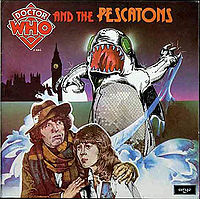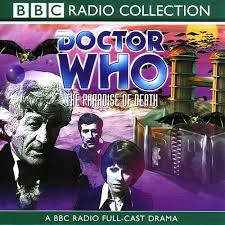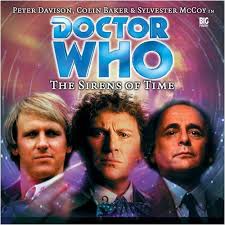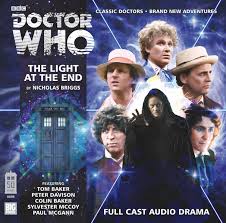After a year’s hiatus, Yours Truly Johnny Dollar returned to the air in October 1955 with Bob Bailey in the title role and with a new format. The series was broadcast five days a week for more than a year.
Collectively, the fifty-five Johnny Dollar serials are the best run of radio drama for a non-anthology series in terms of writing, talent, and music. With the exception of the nine part Phantom Chase Matter, and the six part Kranesburg Matter, each of these serials were five parters. The serials stories generally allowed more complex and engaging stories. Of course, there were a few times it didn’t quite work out that way but these were the exceptions rather than the rule.
Of the fifty-five serials, which were the best? That’s a tough question. Here, I offer my answer as I look at the top five serials. As this is a top five list, there were several stories that I couldn’t quite fit in. So I’ll begin with some honorable mentions.
The Primrose Matter did a great job setting the stage and building suspense, and part four of that matter is one of the best installments of the entire series. The Kranesburg Matter had a really great plot and some great characterization. The Plantangent Matter showed Johnny’s dogged tenacity and honor in solving the murder of a woman he met only once. The Confidential Matter gave keen insight into the character as he coped with learning one of his oldest friends was a crook and undertaking to get some of the stolen money back for the insurance company. The Shady Lane Matter was fascinating in the way it put Johnny opposite a town constable in a small New England town who seemed to always insist that the suspects Johnny found didn’t do it because “it’s not in their nature.”
Of course, none of those episodes made the list. Her’es a look at those which did:
5) The Broderick Matter (Parts One and Two, Three and Four, and Five)
Air Dates: November 14-18, 1955
The Broderick Matter starts off on a positive note. One day an eleven year old girl helped a poor man sell newspapers. The man took out a $1500 life insurance policy and faithfully paid the premiums for more than a decade to thank her. Johnny is looking forward to the case and to meeting the girl who got this type of faith from the old man. But even by part two, Johnny’s finding that her life turned out far differently than the old man would have bet.
He discovers a trail of con jobs, thefts, and broken hearts and Johnny finds himself disillusioned about the young woman and humanity in general. He tracks her down to a hotel at the end of Part Four and finds her about to jump out of a building leading to a very intense and unforgettable Part Five with Bailey and Virginia Gregg turning in a spellbinding and intense performance.
4) The Valentine Matter (Parts One and Two, Three and Four, and Five)
Air Dates: October 31-November 4, 1955
The Valentine Matter is a beautifully tragic story. Johnny meets an old time bootlegger named Valentine at a hotel. The old guy has settled down to peaceful retirement and painting in New Orleans. However, inexplicably there are attempts on his life and Johnny is on the case.
The story really drives home the humanity and decency of Johnny Dollar as portrayed by Bailey. It relies on human drama and suspense rather than any sort of cleverness. Given the insane hatred that’s driving the villains in this story, cleverness would pretty much about.
Beyond Bailey’s performance, the show was bolstered by Betty Lou Gerson’s great acting as Valentine’s daughter at Part Four, and the opening to Part Five was simply the most powerful beginning to any Johnny Dollar serial episode and it relied on sound effects alone to get the job done.
3) The Meg’s Palace Matter (Parts One and Two, Three and Four, and Five)
Original Air Date: September 24-28, 1956
This an episode which became great in the hands of its guest star. Virgina Gregg plays Meg, an Irish Woman who owns a tavern and has faced threats on her life and property. Johnny, of course, arrives representing her insurance company and has to try to keep her alive.
The suspense and the details of a mystery are good but not spectacular. In fact, there was one scene where an accomplice delayed telling Johnny who the killer was for such an absurdly long amount of time so that the killer could do away with his accomplice. In addition, Johnny uses a bluff to solve the case.
But none of that matters becauseVirginia Gregg carries the serial with her performance as Meg, a fiery character who swings between roaring angry to kindly. In the hands of a less competent actress, Meg would have been little more than a bundle of Irish stereotypes but Gregg turns that caricature into one of Johnny Dollar’s most memorable characters. Her final scene was emotionally evocative but not hammy. The whole serial served as a showcase of the unique talent that was Virginia Gregg as she elevates this story from good to great.
2) The McCormick Matter (Parts One and Two, Three and Four, and Five)
Original Air Date: October 3-7, 1955
The first serialized story of Yours Truly Johnny Dollar had to be good. It was CBS’ third try at a serialized mystery drama in the mid-1950s and those efforts had been doomed in a matter of weeks. How long Johnny Dollar would stay on there would have a lot to do with the momentum built by this story.
“The McCormack Matter” did everything it needed to and them some. It centers on a dying prisoner who tells Johnny about something he overheard a recently released prisoner say and with that Johnny sets off to investigate.
The serial showcased the show’s strengths in terms of rich characterization of guest characters, solid expansions of previously used scripts. The mystery was well-written and engaging, and also featured some fantastic action scenes. Part Four ends with Johnny being shot and in Part Five we learn our hero isn’t perfect as he accuses the wrong person before arriving at the astonishing truth.
The McCormack Matter set the tone for the rest of the series and remains one of Johnny Dollar’s best stories.
1) The Nick Shurn Matter (Parts One and Two, Three and Four, and Five)
Original Air Date: December 19-23, 1955
Christmas episodes rarely show very high on top episodes lists for crime series. Either a series will tell a story that’s different from what they do the rest of the year or they’ll tell a story that’s very true to the tone of the series but is awkwardly tone deaf to Christmas.
This is a serial that does neither. It manages both to remain true to the series and to the spirit of the Season.
In it, the partner of night club owner and racketeer Nick Shurn is murdered. The only likely witness, one of Shurn’s employees, Kathy O’Dare, is missing Johnny sets out to find her, eventually tracing her to her hometown, a small timber town in Michigan. Johnny has to find Kathy before Shurn does.
It’s a series of wonderful contrasts as tough guy stuff melds with warm sentimental moments. Johnny punches out one of Shurn’s thugs and later has to kill a man in self-defense on Christmas Eve. On the other hand, Johnny helps a woman with a broken arm wrap her Christmas presents and Kathy’s fire Mike takes a liking to Johnny pretty quickly.
Part Four contains one of Bailey’s best scenes as Dollar as Dollar stumbles through a snow storm unable to see at all. Part Five is another fine episode as Johnny awakening on Christmas morning leads to a very wistful item in the expense account showing Johnny considering what might have been.
The serial’s contrast of Christmas and sentimental warmth against violence, mayhem, and suspense might be best explained by the conversation Mike and Johnny had in which Johnny referenced King Herod when talking about Shurn’s though searching for Kathy illustrated a key idea: warmth, goodness, and truth don’t come in just nice places with little danger. Herod’s violent reaction in the midst of the miracle of Christmas helped explained the violent reaction of Nick Shurn and Benny.
The end is also priceless and a great twist once it’s all said and done. Overall, the Nick Shurn Matter was a Christmas masterpiece that’s good for a listen all year round.
If you enjoyed this post, you can have new posts about Detective stories and the golden age of radio and television delivered automatically to your Kindle.




